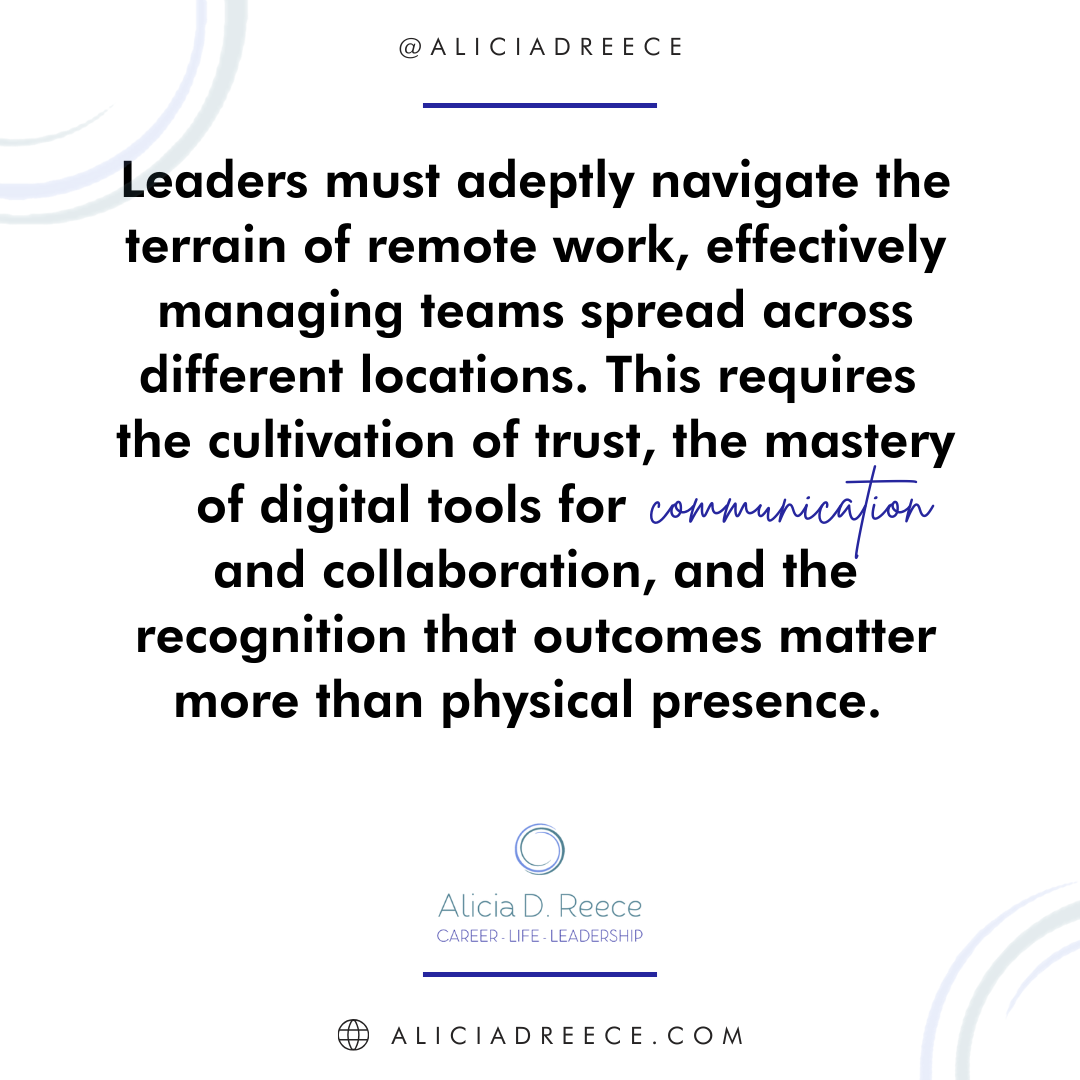Today’s transformative work landscape is being shaped by the symbiotic relationship between groundbreaking technology and human potential. Take Sarah, a senior-level manager at a large tech company. Instead of resisting the integration of AI into her company, she is advocating for its inclusion and ensuring that her team receives the necessary training to leverage the new AI technology and its potential.
As AI and digitalization gallop ahead, leaders find themselves blending the art of human connection with the science of technology. This balance is crucial for success, as explored in depth by the Harvard Business Review when they examined how leaders in various industries marry tech advancement with human-centric strategies.
Embracing Automation and Technology
Automation, driven by remarkable advancements in artificial intelligence and robotics, is revolutionizing industries. For example, James, an assembly line supervisor, witnessed these advancements firsthand when his team championed adding robotics to the assembly line – this addition not only skyrocketed productivity but also allowed his team members to focus on more critical roles that had previously caused additional stress and countless hours of overtime. Routine and repetitive tasks are increasingly being handed over to machines, liberating human workers to focus on more intricate and creative endeavors.
For leaders with aspirations to succeed in this automated world, it’s crucial to recognize that automation isn’t a looming threat but a remarkable opportunity. Embracing technology as a powerful ally that can streamline processes, enhance productivity, and empower your team to engage in more meaningful, value-added work. Develop a tech-savvy mindset that encourages your team members to do the same. In this era of automation, adaptability, and technological proficiency are non-negotiable for leaders.
Industries are waking up to the power of automation, AI, and robotics. These aren’t just tools but catalysts, amplifying human capacities. While technology takes on repetitive tasks, humans are free to explore realms of creativity and strategy. A study from MIT Sloan Management Review reflects that companies blending tech with human skills see a 20% rise in productivity. The narrative isn’t about machines replacing humans, but about crafting a harmonious symphony of both.
The Rise of Remote Work
The seismic shockwaves of the COVID-19 pandemic accelerated the adoption of remote work, challenging conventional notions of the workplace. Remote work offers unprecedented flexibility and grants access to a global talent pool, but it also demands new leadership skills.
Gartner’s report indicates that post-pandemic, 80% of companies plan to adopt remote work at least part-time. The crux isn’t about logging in from home; it’s about nurturing a culture where trust, collaboration, and results take precedence over mere physical presence.
Leaders are challenged to craft strategies where remote teams feel connected, motivated, and part of a cohesive vision while adeptly navigating the terrain of remote work, effectively managing teams spread across different locations. This requires the cultivation of trust, the mastery of digital tools for communication and collaboration, and the recognition that outcomes matter more than physical presence.

Remote leadership mandates a deep understanding of technology and an unwavering commitment to maintaining team cohesion across distances. In this new landscape, leadership transcends the physical office space, emphasizing the importance of interpersonal skills and fostering a strong team culture.
Thriving in the Gig Economy
The gig economy, characterized by short-term contracts and freelance work, is rapidly ascending. This seismic shift is altering the traditional employer-employee relationship, creating a more fluid and dynamic workforce.
With this in mind, leaders need to comprehend this fluid landscape, ensuring freelancers and contract workers are woven into the organizational tapestry. A report by McKinsey showcased that organizations embracing the gig economy’s strengths see a surge in innovation and efficiency. The future seems to point towards a mosaic of full-time employees, freelancers, and gig workers, creating a vibrant tapestry of skills and perspectives.
This means that leadership must adapt to this changing landscape by effectively managing a diverse workforce that includes freelancers and contractors, as well as employees. They need to cultivate an inclusive work culture where all contributors are valued, irrespective of their employment status.
The emphasis must shift towards project-based thinking and outcome-oriented management to thrive in the gig economy. Leaders should excel at assembling teams for specific tasks, leveraging the unique skills of gig workers, and seamlessly integrating them into the workflow.
Preparing Leaders for the Future
As the workplace metamorphoses, the skills and qualities expected of leaders are also undergoing a profound transformation. In Elena’s case, she could tell that her leadership needed a revamp, and as CEO, she knew that the fastest way to do that was to tap into her technology-savvy team members, which resulted in the integration of AI-powered productivity tools. Those tools not only saved the entire team hours of work, but they found that those hours could be used to pursue projects that had been put on the “back burner” due to lack of time and limited resources. To ensure that you and your team stay at the top of your game, here are some tips to consider:
1. Continuous Learning
The pace of change mandates perpetual learning. The World Economic Forum’s “Future of Jobs Report” emphasizes that by 2025, 50% of all employees will need reskilling.
To stay at the forefront of this need, keep yourself and your team updated on industry trends, technological advancements, and leadership best practices. Commitment to ongoing education is paramount in a world where knowledge swiftly becomes outdated.

2. Emotional Intelligence (EQ)
EQ, as explored in Psychology Today, is not just about understanding emotions but harnessing them for improved collaboration and decision-making. Leaders with EQ will be pivotal in building bridges across distributed teams, ensuring emotional well-being while driving performance.
This is because leaders with high EQ are able to adeptly navigate complex interpersonal relationships, resolve conflicts amicably, and foster a positive work environment. In an era of remote and diverse teams, understanding and managing emotions become even more critical.
3. Agility
In this rapidly changing era, adaptability is gold. The Boston Consulting Group advocates that companies promoting agility are five times likelier to experience above-average growth rates.
That makes agility a foundational trait for those in leadership positions. Agile leaders can deftly adapt to change, make swift decisions, and pivot strategies when the situation demands. Cultivate a culture of agility within your organization. Stress the importance of flexibility, adaptability, and the ability to thrive in uncertain conditions.
4. Fostering Innovation
Leaders need to be torchbearers of innovation. The Forbes Insights Team highlights that organizations endorsing a culture of innovation are 45% more likely to report a market share growth of 10% year-over-year.
You can actively foster innovation as a leader by:
Welcoming Diverse Perspectives: Actively seek input from team members with diverse backgrounds, experiences, and perspectives. Innovation thrives in environments where various viewpoints are not just tolerated but actively valued and integrated into the decision-making process.
Adopting a Growth Mindset: Promote a growth mindset within your team. Encourage them to embrace challenges, view failures as opportunities for growth, and experiment with new ideas. A growth mindset cultivates a culture of continuous improvement and innovation.
Resource Allocation: Provide the necessary resources for innovation, including time, tools, and a supportive work environment. Advocate for these resources within your organization, as innovation often necessitates a certain level of investment.
The future of work and leadership holds exciting opportunities for those who are willing to adapt and grow. In this era, leaders will not just adapt to change; they’ll anticipate, influence, and shape it. As technology continues to redefine the contours of business and work, the leaders who harmonize it with the timeless qualities of human connection will pen the future’s success stories.
As leaders, it’s crucial to stay well-informed about the latest trends, wholeheartedly embrace technology, and diligently develop the skills needed to lead effectively in a rapidly changing environment. Whether it’s automation, remote work, or the gig economy, understanding these shifts and proactively preparing for them will set you on a path to successful leadership in the future of work.


